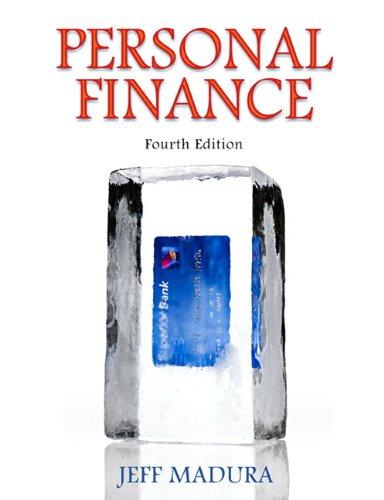QUESTION 1 Meacham Corp. wants to issue bonds which can be sold at a market price of $540.27 for each bond. The bond will have 8 years maturity period. Meacham Corp. common stock currently sells for $30 per share. Meacham can sell additional shares by incurring flotation costs of $3 per share. Meacham paid a dividend yesterday of $4.00 per share and expects the dividend to grow at a constant rate of 5% per year. Meacham also expects to have $12 million of retained earnings available for use in capital budgeting projects during the coming year. Meacham's capital structure is 40% debt and 60% common equity. Meacham's marginal tax rate is 35%. a. Calculate the cost of debt before tax and after-tax cost of debt assuming Meacham's bonds are its only debt. b. Calculate the cost of retained earnings. C. Calculate the cost of new common stock d. Calculate the weighted average cost of capital assuming Meacham's total capital budget is $30 million. QUESTION 2 The following market information was gathered for the Blender Corporation. The firm has 1,000 bonds outstanding, each selling for $1,100.00 with a required rate of return of 8.00%. Blender Corporation has 5,000 shares of preferred stock outstanding, selling for $40.00 per share and 50.000 shares of common stock outstanding, selling for $18.00 per share. If the preferred stock has a required rate of return of 11.00% and the common stock requires a 14.00% return, and the firm has a corporate tax rate of 30%, then calculate the firm's WACC adjusted for taxes. QUESTION 3 Company RH is considering two investments with 1-year lives. The more expensive of the two is the better and will produce more savings. Assume these projects are mutually exclusive and that the required rate of return is 10 percent. Given the following free cash flows: Initial outlay Inflow year 1 PROJECT A --$195,000 240,000 PROJECTE -$1,200,000 1,650,000 A. Calculate the NPV for each project. B. Calculate the PI for each project C. Calculate the IRR for each project. D. If there is no capital-rationing constraint, which project sho rationing constraint, how should the decision be made? QUESTION 1 Meacham Corp. wants to issue bonds which can be sold at a market price of $540.27 for each bond. The bond will have 8 years maturity period. Meacham Corp. common stock currently sells for $30 per share. Meacham can sell additional shares by incurring flotation costs of $3 per share. Meacham paid a dividend yesterday of $4.00 per share and expects the dividend to grow at a constant rate of 5% per year. Meacham also expects to have $12 million of retained earnings available for use in capital budgeting projects during the coming year. Meacham's capital structure is 40% debt and 60% common equity. Meacham's marginal tax rate is 35%. a. Calculate the cost of debt before tax and after-tax cost of debt assuming Meacham's bonds are its only debt. b. Calculate the cost of retained earnings. C. Calculate the cost of new common stock d. Calculate the weighted average cost of capital assuming Meacham's total capital budget is $30 million. QUESTION 2 The following market information was gathered for the Blender Corporation. The firm has 1,000 bonds outstanding, each selling for $1,100.00 with a required rate of return of 8.00%. Blender Corporation has 5,000 shares of preferred stock outstanding, selling for $40.00 per share and 50.000 shares of common stock outstanding, selling for $18.00 per share. If the preferred stock has a required rate of return of 11.00% and the common stock requires a 14.00% return, and the firm has a corporate tax rate of 30%, then calculate the firm's WACC adjusted for taxes. QUESTION 3 Company RH is considering two investments with 1-year lives. The more expensive of the two is the better and will produce more savings. Assume these projects are mutually exclusive and that the required rate of return is 10 percent. Given the following free cash flows: Initial outlay Inflow year 1 PROJECT A --$195,000 240,000 PROJECTE -$1,200,000 1,650,000 A. Calculate the NPV for each project. B. Calculate the PI for each project C. Calculate the IRR for each project. D. If there is no capital-rationing constraint, which project sho rationing constraint, how should the decision be made







